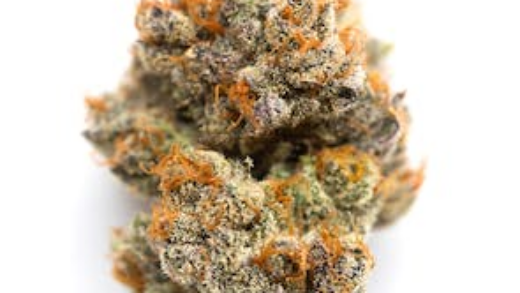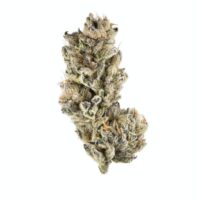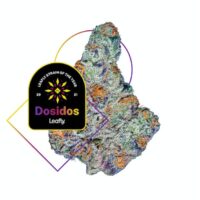While California and many other states with an abundance of cannabis flower have seen more and more of it become bubble hash or full melt, those hashes are generally not made using the traditional techniques of Moroccan hash making. Due to the unique, traditional methods employed by Moroccan hash makers, the hashish they produce has been found to be one of the only sources of hashishene in nature.
First Discovery of Hashishene in Hash
In November 2014, a team of French researchers looking at samples of hash they believed to have originated in Morocco noticed the presence of an “unusual monoterpene” that had previously been “reported only once in the past as a minor constituent (<0.1%) of the essential oil of Mentha cardiaca L [Scotch Spearmint Oil].” While previously identified as a minor terpene in Scotch Spearmint, that terpene was unnamed, and due to the large amount observed in the samples of hashish (10.2% median value per sample), the researchers called it hashishene.
This preliminary study was done looking at just 15 grams of hash, and it is possible that a larger sample size may have had different results, but no follow up studies on hashishene have been completed. Those 15 grams represented just 11 different samples of hashish, which is a pretty small sample size, out of those, the hashishene total ranged “from 1.1 to 14.9%.” To clarify for anyone not familiar with hashish, it is a solventless concentration of cannabis trichomes, generally not decarboxylated, which is very different from BHOs, CO2 oil, Iso hash, distillate, and all other sorts of chemical extracts of trichomes.
Conversion from Myrcene
You might now be wondering, “where does hashishene come from?” The answer is from the terpene myrcene, specifically, through a process similar to decarboxylation, where UV light and exposure to oxygen causes the myrcene to convert to hashishene. Both terpene molecules have the exact same atoms but in a different arrangement. According to the researchers “During the hashish manufacturing process, beta-myrcene (a natural hydrocarbon found in the cannabis plant) is rearranged. This occurs through photo-oxidation in the presence of light and oxygen.”

That photo-oxidation is the main thing that separates traditional Moroccan hashish from the more modern methods like bubble hash and full melt, and why hash made in America is generally assumed to be devoid of hashishene. In Morocco, once the cannabis plants are harvested “The Sun dries these plants on the rooftops of the same shacks they use to process and package all their material.” Beyond that initial drying of the plants, the hashish itself is then dried in the sun between multiple steps of sieving and then more drying in the sun. The resulting hashish is known by many names around the world, in Spain, it is known “as “pollen” if it’s dirty-blonde and crumbles, or “paki” if it has a play-dough consistency along with a darker color.”
In the U.S., that process would generally not be possible, as it exposes the plants to all kinds of contaminants that would result in failed tests. A study of contaminants in Morrocan hash revealed shocking amounts of contamination by e coli and other serious adulterants, likely from the production and transportation methods used.
Other Plant Sources of Hashishene
As trace amounts of hashishene were found in a sample of Scotch Spearmint, it is possible it converted from myrcene in the plant when exposed to UV light. If that is true, then it is possible that there are trace amounts of hashishene in all kinds of plants with myrcene, but if that were the case, it wouldn’t be as rare in the scientific literature and would have been observed in mangoes, hops, and other common sources of myrcene.
Medical Effects Are Unknown
Even though hashishene was discovered nearly a decade ago, no research has been done to observe potential medical benefits or potential harms of it. Presumably, it may function similar to myrcene, but there is no way to know for certain without more and better research.
If a consumer wants to experience hashishene, and they live in a state with legal homegrowing, they should look into traditional Moroccan hashmaking methods, and do their best to re-create those, as it is unlikely any company in any legal state market is using them to make hash. In California, Nasha’s hand-pressed temple balls are the closest, but it is unclear if their cannabis was cured/dried in the sun, which is a critical step for hashishene formation. With some experimentation, it could be possible to recreate the right amount of UV light to produce hashishene in a controlled, pest-free setting (unlike cannabis left to dry on a rooftop).
Sign Up for Our Newsletters
Get notified of our the latest cannabis news, exclusive brand deals, events updates and more!












